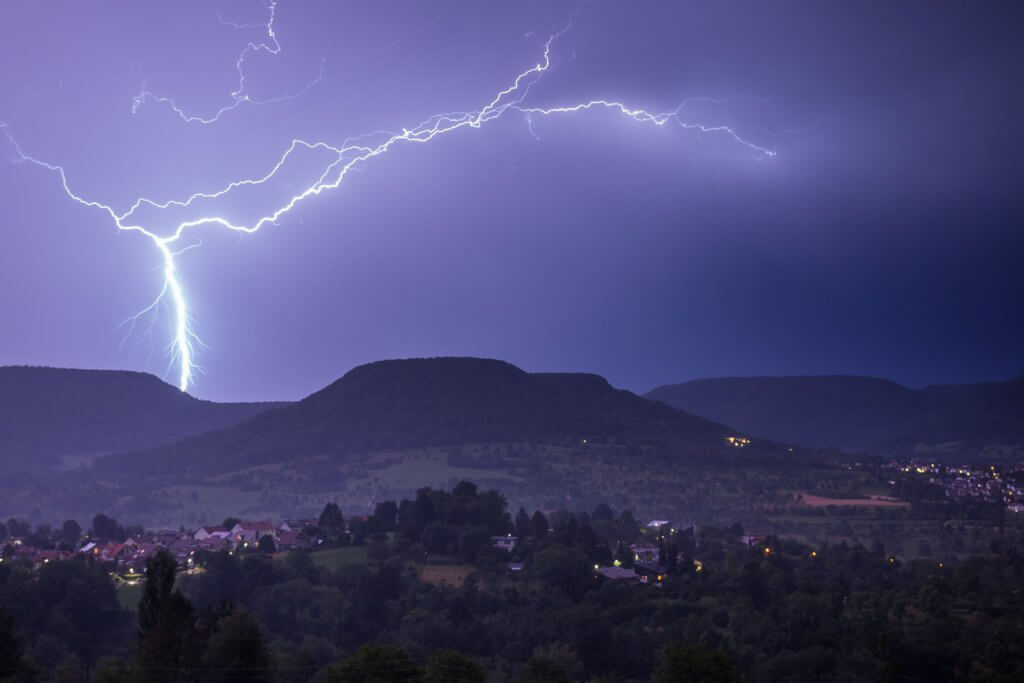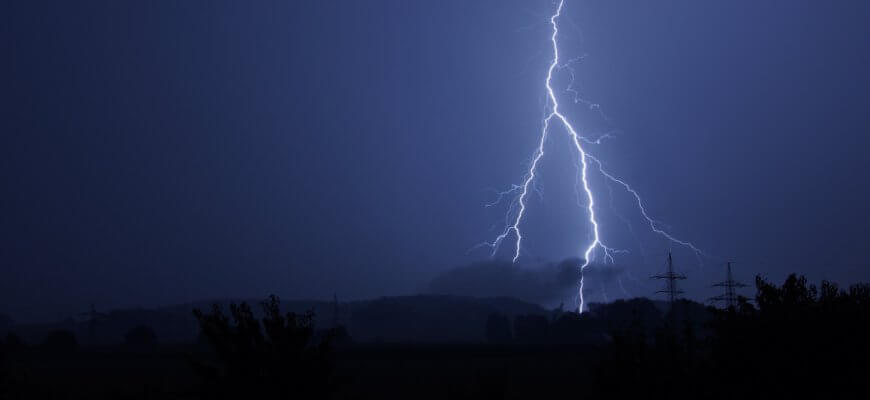When I think about electricity and nature – lightnings are the first thing coming to my mind. Not only is the phenomenon of such a huge amount of electricity being released at once absolutely amazing. Also, the atmosphere and feeling, lightnings can create are very special. Some people are scared of them and hide under the blanket. Others enjoy lightnings and like watching them, taking photos and can specifically relax at home – in a safe place – while a thunderstorm is going on outside. For our theme session of electricity, I’d like to take a closer look at lightnings today and try to answer the following questions:
What actually is a lightning ? How does it develop? How much energy is inside a lightning? And can we maybe (or should we even) use them for our human energy systems?
What is a lightning?
A lightning is not producing or generating energy – it is the result of the electrostatic discharge of energy which is generated in the sky during thunderstorms. To be more specific – this sudden discharge of energy can occur either inside a cloud, in between clouds or in between the cloud and the earth [1]. What we see from earth is of course not the ‚charging‘ of a lightning but only the discharge event. This is mostly a sudden flash of light from the sky to earth, often branching towards the ground – but there are actually a lot more different forms of lightnings. The lightning mostly hits areas, which are higher then their surrounding and have a pointy shape – for example a tower or an individual tree.
How is a lightning generated?
During a thunderstorm fluffy white clouds suddenly turn into places of chaos and disorder. As warm and cold air come together the warmer air moves upwards. Water droplets in this air collide with ice crystals inside the cold air, and those two particles have opposite charges. This is just like inside a battery. The ice crystals have a positive charge and the water droplets a negative charge. As they move upwards and downwards, a positive and a negative end of the cloud forms: a separation of charges. When the charge gets high enough – the electrostatic energy is released and there comes the lightning [1, 2].
How much energy is inside a lightning?
The electic potential difference causing a lightning can be apparently up to 1 billion Volt [3]. This is quite tremendous considering that a standard plug socket has about 230 V. With a current of up to 10.000 A, the discharged energy in a lightning (with a duration of let’s say 30µs) is 0,833 kWh (simply multiply the current with the electric potential and time) [4]. To give you a relation: this is almost the same amount of energy as a full load of laundry at 60°C [5]. Now considering the frequency of lightnings (observe the current lightnings in Europe on this real-time map) there is quite a lot of energy coming down from the sky ans just being ‚wasted‘ at the earth’s surface. Which brings me to the next question…
Can we harvest electricity from lightnings?
Maybe the even better question to ask would be: does it make sense to try?
Undoubtedly it would be great to capture and make use of that huge amount of energy, but let’s face the downsides. Despite weatherforcasts and lightning hot spots (e.g. television towers on a hill or single trees on a field), it is not easy to predict where and when a lightning is going to strike. So even more then it is the case for wind or solar energy: lightnings as renewable energy sources are pretty unreliable. And what to do with all that energy, when the lightning hits at nighttime and it is not actually needed? How to store it (here are some of our articles about the challenge of energy storage)? Not to mention the trouble to bring the energy into the grid, when the lightning energy was absorbed in a remote place – let’s say in a mountain region. Another important issue to think of: to construct an appropriate ‚lightning catcher‘ which is strong and resilient enough to handle these huge amounts of energy – over and over again – at best without losing any.

Lighning striking in a mountain region
Now – talking about renewable energy sources and electrictiy, of course we need to talk about efficiency. And with this I would also like to close this article: if one lightning can power your washing machine for one load, whereas one hour of sunlight has energy that we need for a complete year – what would you invest in: a solar panel, or a ‚lightning collector‘ ?
PS: You might ask yourself: Where was the biomimetic part? To be honest, there wasn’t much of it – but how can we have a theme session about electricity without talking about lightnings? 🙂
References
[1] https://en.wikipedia.org/wiki/Lightning [2] https://www.nasa.gov/audience/forstudents/k-4/home/F_What_Causes_Lightning_Flash.html [3] http://www.nssl.noaa.gov/education/svrwx101/lightning/faq/ [4] https://www.goruma.de/Wissen/Naturwissenschaft/Meteorologie/gewitter_blitze.html [5] https://www.stromverbrauchinfo.de/stromverbrauch-waschmaschinen.php [6] http://www.independent.co.uk/news/science/why-cant-we-extract-electricity-from-lightning-10162498.html



